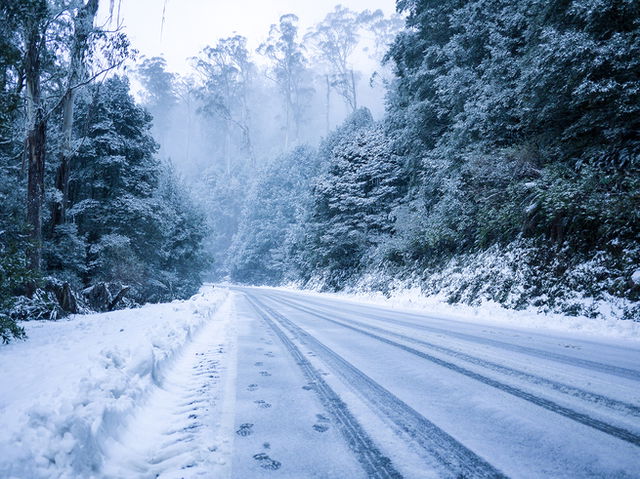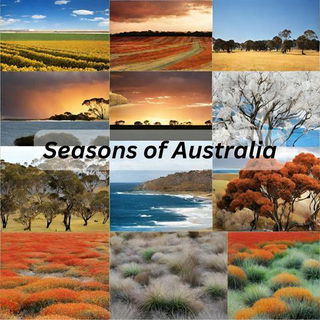In 2025, winter in Australia will begin on June 1st and last until August 31st. However, the winter solstice in the Southern Hemisphere will take place on June 20th, 2025 at 1:42 am.
In Australia, winter lasts from June to August, with July being the coldest month of the year.
Winter in the country is followed by autumn and preceded by spring. During winter, days are usually shorter and nights are longer. The temperature drop leads to snowfall in many regions, especially the southern part and mountains.

Why The First Day Of Winter Is Not On Winter Solstice In The Southern Hemisphere
In the Southern Hemisphere, winter does not begin with the winter solstice, which occurs some time later. This timing difference is due to the Earth's axial tilt and its orbital path around the Sun.
The Earth's axis is tilted in the opposite direction to its orbital plane, leading to different amounts of sunlight reaching different regions throughout the year. Simultaneously, the winter solstice marks the shortest day and longest night in the Southern Hemisphere. Hence, why it falls in the middle of the season and not the beginning.
Although winter solstice is important for both hemispheres, and it marks the arrival of winter in one and not the other, as the Earth tilts and moves around the Sun differently.
How is Winter in Australia
Australian winters share a few similarities with the Northern Hemisphere in respect to the shorter daylight hours and longer nights.
The climate across the country ranges from sunny and pleasant days to cooler nights. Snowfall and freezing temperatures are a common aspect in the southern regions, while the north experiences milder days and cooler nights. Rainfall and stormy weather are also common occurrences, particularly in specific areas.
Despite mild average temperatures, Australia experiences significant seasonal highs and lows, especially in alpine regions and areas with significant elevation changes.
Due to its huge terrain, Australia has a diversity of climate zones. It is for this reason that the southern zone has warm summers and irregular rainfall, while the northern zone has a tropical climate marked by hot, humid summers and dry winters.
During winter, trees like birch and oak in Australia lose their leaves due to colder temperatures and shorter days, helping them conserve water and energy.
Some animals migrate, hibernate, or gather food for winter. Snow provides moisture and insulation for many species.
Vernalisation, the process of cooling the seed before it begins to germinate, is important for plants to grow and survive Australia's winter.

Winter Harvest In Australia
In Australia, winter crops are usually sown in autumn and harvested in spring or summer which includes oats, barley, wheat, oil seeds like canola, fava beans, canola, field peas, lupins, safflower and different vegetables.
The most popular winter crop is Wheat, as Australia is one of the largest global producers and exporters of wheat.
Another significant winter crop is barley, especially in the market of malting barley. Areas with significant rainfall are suitable for canola used for oil production.
Fava beans, chickpeas, and field peas are important legume crops, while Western Australia is dominated by lupins.
The premium quality of oats makes it a popular staple and although safflower is a smaller crop it promises cash. Winter vegetables differ by region providing the required nutrients during these months.
Festivals and Celebrations in Winter
Although winter is generally associated with staying in and hibernating, it is a brimming season with fun festivals and celebrations.
Popular winter festivals across the world add a colourful touch to this season as various cultures celebrate winter solstice festivals, marking the return of light and longer days.
Some mythological stories often depict winter as divinity or symbolise the seasonal transition through legends of natural phenomena like freezing rivers or colour changing animals.
Similarly, Australia hosts a ton of festivals and celebrations in winter. Some of them are:
- Sydney Festival : A three-week cultural celebration in January.
- Fringe Festival : Australia's largest arts festival in February and March in Adelaide.
- Mansfield Lantern Festival : Annual event in Victoria celebrating the longest night.
- Winter Wonder lights : Family event at Sovereign Hill from June 28 to July 21, 2024.
- Antarctic Midwinter Festival : Held in Hobart.
- The Light in Winter : Festival in Melbourne.
- Winter Magic Festival : Held in the Blue Mountains.
- Mary Poppins Festival in the Park : Celebrated in Maryborough.
- Alice Springs Beanie Festival : Unique festival in Alice Springs.
- City of Perth Winter Arts Season : Cultural events in Perth.
Other festivals include Parrtjima, Darwin Festival, Byron Bay Bluesfest, Bowral Winterfest, Rising Festival in Melbourne, Dark Mofo in Hobart, Dubbo Winter Whiskey Festival, Illuminate Adelaide, Truffle Kerfuffle in Manjimup, WA, and Huon Valley Mid-Winter Festival in TAS.
You might be interested in learning about
Winters in the Northern Hemisphere
Seasons of the Year in Australia
Autumn in Australia











